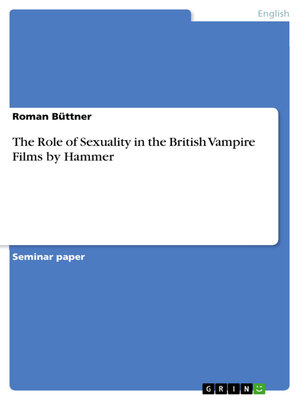
Sign up to save your library
With an OverDrive account, you can save your favorite libraries for at-a-glance information about availability. Find out more about OverDrive accounts.
Find this title in Libby, the library reading app by OverDrive.



Search for a digital library with this title
Title found at these libraries:
| Library Name | Distance |
|---|---|
| Loading... |
Seminar paper from the year 2004 in the subject English Language and Literature Studies - Literature, grade: 1,6, University of Marburg (Institut für Anglistik und Amerikanistik), course: Blood, Lust, and (Un)death: Vampires in American and British Cultures, language: English, abstract: Terence Fisher's masterpiece was his 1958 movie version of Bram Stoker's Dracula, starring Christopher Lee and Peter Cushing. With the huge success of that film, Fisher and Hammer Films started a whole new era of horror movies. Other Dracula films were to follow. Vampirism has traditionally been associated with lust and sexuality, which becomes clear in various modern vampire movies. But this is rather an exception because the film history of blood suckers demonstrates that, when times were different, vampires were depicted differently, too. In Fisher's films, sexuality began to play a bigger role in the genre than ever before and became the key to success of each and every vampire film made by Hammer. Using two of the early Hammer movies, Dracula (1958) and its sequel Dracula, Prince of Darkness (1966), this paper will not only present the necessary historical background that made it all possible but will also analyze these movies with regard to the role of sexuality in them.







